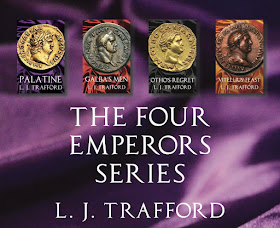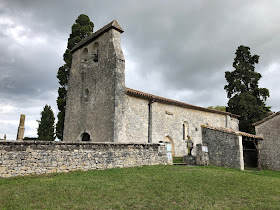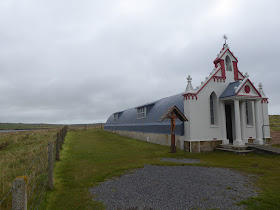In September, our family revisited a favourite holiday destination. We hadn’t been there for several years and were eager to return. It being autumn, the weather was mostly chilly, and rainy, but it didn’t dampen our enthusiasm. Indeed, that sort of weather, we always think, suits the landscape and, of course, without it, the flora of heather, oakwoods, ferns and abundant moss would not be there.
Anyway, the rain held off often enough and long enough to enable us to enjoy the beauty, the magnificence, of this relatively remote location. So, where were we? The far west coast of Scotland, in the region of Moidart, part of the Morar, Moidart and Ardnamurchan National Scenic Area, a remote area of islands, lochs, ancient woodlands and narrow winding roads, an hour’s drive to the west of the nearest town of any size, Fort William (population 10,500). Moidart is part of the area also known as the Rough Bounds, justifiably so, it might seem, for it is famous for its wildness and inaccessibility and remains very sparsely populated. It feels rather like being at the edge of the world...
And it is this very wildness and inaccessibility that is both part of the appeal for us coming here at all, and also a spur to my imagination.
The house we stay in, Dorlin, has history: it was once part of a much larger house that was demolished in the early 1960s. This larger house wasn’t especially old, having been built in the 19th century. Our “cottage” was a wing of the house, and may originally have been a chapel. It remained standing and was converted to the cottage that is now used for holiday lets.
There was an earlier house on this site, built in the late 18th century “in the Georgian style” by Aeneas R. Macdonald, a nephew of the estate’s owner, Alexander MacDonald, known as “Lochshiel”. Apparently Aeneas assumed he’d succeed to the estate and planned an extensive tenant clearance scheme. But he was thwarted when his plans came to the notice of Lochshiel’s family and the estate was sold from under him to James Hope Scott. Scott was married to Charlotte, a granddaughter of Sir Walter Scott. Apparently Scott proved a benevolent landlord and did much to improve the property, constructing roads, improving the dwellings of tenants and erecting a church and school and so on. Today Dorlin can be reached only by sea, or via a very narrow, winding road that runs alongside the lively Shiel River. One wonders what sort of access the property might have had in the mid 19th century?
After Charlotte’s death in 1858, Scott married Lady Victoria Fitzalan Howard, daughter of the 14th Duke of Norfolk, who was christened Victoria in honour of one of her godmothers, the Queen. It was now that Scott built the three-storey Dorlin House. The work was completed in 1864, exactly one hundred years before it was demolished. One is led to wonder at the lifestyle of these, one presumes urbane, people in such a remote, inaccessible region. For nearly six years a goddaughter of the monarch hosted parties for members of the aristocracy. I have always wondered at the heroic logistical efforts that these people’s servants must have had to make to supply all the provisions necessary to keep these grand house parties satisfied.
The house changed hands a number of times over the next half century or so until, during World War Two, it was requisitioned by the Royal Navy and, as HMS Dorlin, was used for special boat and beach signal training, particularly for Royal Marine Commando units.
The history of Dorlin House is interesting, of course, but not – to me, at any rate – quite as fascinating as that of the building that lies in the tidal bay on the shores of which Dorlin stands.
For in the bay is Eilean Tioram (“dry island”), a tiny island that becomes accessible on foot only for a few hours each day when the sea withdraws sufficiently to reveal a causeway. And on the island stands a ruined castle – Castle Tioram – that probably dates from the 13th century and, as the seat of the Clan Ranald, a branch of the Clan mac Donald, had a surprisingly important role in Highland history, given its extreme remoteness.
The castle seems to have been built (or more likely extended) by Amie mac Ruari, a 14th century noblewoman, who was a sister of the Lord of Garmoran, a medieval lordship that included the areas of Moidart, Morar and Ardnamurchan, as well as the Small Isles. This lordship formed part of the Lordship of the Isles, a title of Scottish nobility with historical roots that go back beyond the kingdom of Scotland. Despite paying technical homage at times to kings of Norway, Ireland and Scotland, for the most part the Lords of the Isles remained independent and extremely powerful: at their height they were among the greatest landowners and most powerful lords in Britain after the kings of England and Scotland. Castle Tioram, for all its remoteness, was once the main residence of the lords of Garmoran and, subsequently, of the chiefs of the Clan Ranald.
Anyway, Amie was the wife of John of Islay, chief of the Clan Donald (mac Donald), and the (first?) Lord of the Isles. John was ambitious and, to cement his alliance with Robert, who would become king of Scotland, he divorced Amie and married Robert’s daughter, Margaret, disinheriting Amie’s children. Ranald, Amie’s son, having lost his claim to be the Lord of the Isles, founded the Clan Ranald, and had his residence at Castle Tioram.
The castle remained in the family’s possession until the 19th century, despite turbulent times and several declarations of forfeiture. Until the mid 16th century, the Clanranalds were intermittently involved in the struggle between the Crown and the Lordship of the Isles and later with the Jacobite uprisings. The history is undoubtedly colourful, with much fighting, sea battles and hints of piracy.
But one of the aspects of life in Castle Tioram that has always intrigued me hugely, much more so really than the warring, is how the rich and powerful in these incredibly remote regions managed to lead the richly provisioned lives they did. Throughout the years of its occupation, Castle Tioram was obviously a centre of power for the Clanranalds as well as a dwelling. Under the clan system, the chief would provide land and security for his people and bore his responsibility in exchange for their loyalty and military service. The clan expected their chief to be strong, fearless in battle but also generous. Hunting and feasting, and music, were important. And, just as with the parties held centuries later at Dorlin House, at a time when there were few but at least some roads, in the earlier centuries of Castle Tioram’s existence, all provisions presumably had to be brought either by sea or somehow overland…
Until the 19th century, the castle could only be approached overland by narrow, rough hill tracks passable only on foot or by sturdy highland ponies. The castle itself was almost certainly a hive of activity but somebody was making this possible: the clan chief obviously supplied the money but again it had to be an army of servants who would have had to source the provisions and have them delivered, taking into account the inevitable periods of highly inclement Highland weather…
Anyway, I would just like to round this piece off with a story from the 17th century, about Donald, the 13th of Clanranald, who lived for the most part at Castle Tioram, and whom local stories painted as a man of courage in battle but also as a man whose behaviour was autocratic and even savage and cruel. These stories were written down in the 19th century by a parish priest of Moidart, Charles MacDonald, in his book charting the history of the Clanranald clan, Moidart: Among the Clanranalds. And there is one story in particular that fired my storytelling imagination…
One of the tales became a well-known local tradition and illustrated the power and jurisdiction held by a chief over his clansmen. When a quantity of silver went missing, Donald suspected three castle servants, two men and one woman who, apparently, walked daily to their work at Tioram across the moor along one of those rough tracks, having set out from Kinlochmoidart, several miles away. Although he was unable to prove their guilt, Donald had the two men executed by hanging on the gallows hill south of the castle, and the woman was tied to one of the rocks in the estuary by her hair and allowed to drown in the rising tide. Execution of men by hanging and women by drowning was evidently used in more ancient times, so the story may in fact apply to a previous era, or indeed be quite untrue. However, Father MacDonald reported that a rock on the shore of Eilean Tioram was once known as the Rock of James’s Daughter, so maybe there was some truth in it…
Anyway, in the 19th century, when a path was being constructed around the Loch Moidart shore, a hoard of silver Elizabethan coins was discovered. The story of course then claimed that they were Donald’s missing coins, hidden on the path by the thieving servants as they made their way to work across the moor. But those coins were one hundred years old at the time of Donald’s loss, so maybe the conjecture was fanciful. But it made a good story, and in honour of the tale, the newly constructed path became known as “The Silver Walk”.
After Donald’s death in 1686, Castle Tioram lost its role as the Clanranald family residence, for his son Allan lived elsewhere. The castle was garrisoned by Government troops from 1692, because of Allan’s support for the Jacobite cause, and fell into disrepair. But, in September 1715, Allan retook the castle but then ordered it to be burnt down before he left for the battle of Sherriffmuir, to prevent it falling into his enemy’s hands. It is thought he had a premonition, for he died at Sherriffmuir. At any rate, it was the end of Castle Tioram as the seat of the Clanranalds, and the beginning of its decline into the rather romantic ruin it now is.
It is certainly a place that sparks a writer’s imagination: the remoteness and the beauty of course feed the soul’s desire for spiritual nourishment but it’s not hard, either, if you stand alone in the bay as the sun dips beneath the horizon throwing the castle into gloom, and the tide begins to ripple back again, to let tales of terror conjure up a quite different sort of spirit…











































